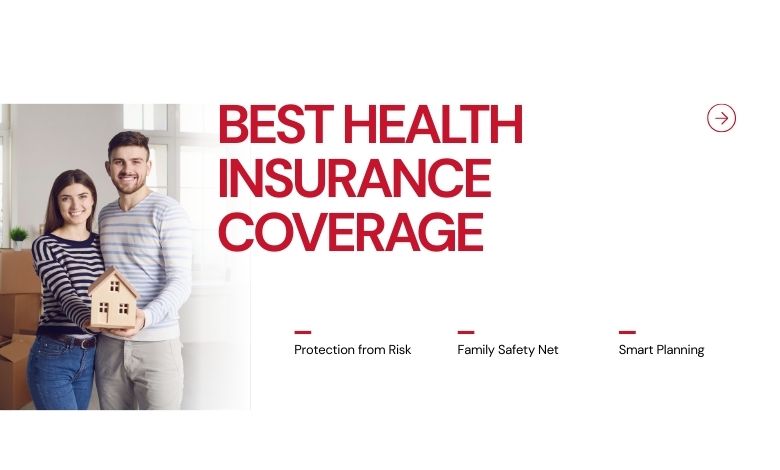Private health insurance plays a central role in the American healthcare system. Unlike government programs such as Medicare and Medicaid, private insurance is offered by commercial insurers, employer-sponsored plans, and the ACA (Affordable Care Act) Marketplace. For millions of Americans, understanding the true cost of private health insurance in the USA is critical to making informed choices about coverage and managing healthcare expenses.
In this detailed guide, we’ll break down how much private health insurance costs in 2025, what factors influence premiums, typical expenses beyond the monthly premium, and tips to reduce costs without sacrificing coverage.
Why Private Health Insurance Matters
Healthcare in the USA is among the most expensive in the world. A routine doctor’s visit can cost hundreds of dollars, and major medical events like surgery or hospitalization can cost tens of thousands. Private health insurance provides financial protection and ensures access to healthcare facilities and doctors that may not accept government-funded coverage.
For the uninsured, even one emergency room visit can trigger medical debt. Private insurance, despite its cost, remains the most reliable way for individuals and families to secure protection.
Average Cost of Private Health Insurance in the USA (2025)
The cost of private health insurance depends on multiple factors, but on average:
- Individual Coverage: Around $450–$600 per month for ACA-compliant Marketplace plans.
- Family Coverage: Around $1,200–$1,800 per month, depending on household size and coverage tier.
- Employer-Sponsored Plans: Employees pay about $120–$150 per month for single coverage and $500–$600 for family coverage, with employers covering the rest.
According to the Kaiser Family Foundation (KFF), the average annual premium for employer-based family coverage exceeded $23,000 in 2024, with workers contributing about $6,000 out-of-pocket. These numbers are expected to rise slightly in 2025.
Key Factors That Influence the Cost
1. Age
Premiums rise with age. For example, a 25-year-old might pay $300 a month for the same plan that costs a 60-year-old over $800. Insurers are legally allowed to charge older adults up to three times more than younger enrollees.
2. Location
Healthcare costs vary dramatically across states. For example, premiums in states like Wyoming and West Virginia are among the highest, while Massachusetts and Rhode Island tend to have lower costs.
3. Plan Type
Private insurance plans are categorized by metal tiers under the ACA:
- Bronze – Lower premiums, high deductibles.
- Silver – Moderate premiums, moderate deductibles (often best for subsidies).
- Gold – Higher premiums, lower deductibles.
- Platinum – Highest premiums, lowest out-of-pocket costs.
4. Household Income
Subsidies reduce costs for low- and middle-income households under the ACA. For example, a family earning 200% of the federal poverty level may receive thousands in annual tax credits.
5. Tobacco Use
Insurers can charge up to 50% higher premiums for smokers compared to non-smokers.
6. Coverage Level and Network
Plans with broader provider networks or more comprehensive benefits cost more. Choosing an HMO (Health Maintenance Organization) may be cheaper than a PPO (Preferred Provider Organization), but with limited provider choices.
Breakdown of Private Health Insurance Costs
When analyzing private health insurance, it’s not just about the monthly premium. Other costs include:
- Premiums – The fixed monthly payment to maintain coverage.
- Deductibles – The amount you must pay before insurance begins covering care.
- Example: A $5,000 deductible means you pay the first $5,000 of covered services out-of-pocket.
- Copayments – Flat fees for services (e.g., $20 for a doctor’s visit).
- Coinsurance – A percentage of costs you pay after the deductible (e.g., 20%).
- Out-of-Pocket Maximum – The maximum you’ll spend in a year. Once reached, the insurance company pays 100% of covered services.
In 2025, the average deductible for ACA Marketplace silver plans is about $4,500 for individuals and $9,000 for families.
Cost of Private Health Insurance by Coverage Type
1. Individual Plans (Self-Employed or Unemployed)
- Average Premium: $500 per month.
- Annual Cost: $6,000 plus out-of-pocket expenses.
- Best Option For: Freelancers, gig workers, and those without employer coverage.
2. Family Plans
- Average Premium: $1,600 per month.
- Annual Cost: $19,200, often reduced by subsidies.
- Best Option For: Families who don’t qualify for Medicaid but need comprehensive coverage.
3. Employer-Sponsored Insurance
- Average Employee Contribution: $6,500 per year for family coverage.
- Employer Contribution: $16,000 or more annually.
- Best Option For: Employees with access to workplace benefits.
4. Private Non-ACA Plans (Short-Term or Off-Market)
- Average Premium: $150–$300 per month.
- Drawbacks: Limited coverage, exclusions for pre-existing conditions.
- Best Option For: Temporary coverage when transitioning between jobs.
How Private Insurance Costs Compare with Government Programs
- Medicaid – Free or very low cost, but only for those meeting income requirements.
- Medicare – Available for seniors (65+) and disabled individuals, but many add private Medicare Advantage or Medigap plans for full coverage.
- Private Insurance – More expensive but provides flexibility, broader networks, and options for those not eligible for government programs.
Strategies to Reduce the Cost of Private Health Insurance
- Shop During Open Enrollment – Compare multiple ACA Marketplace plans to find the most cost-effective.
- Apply for Subsidies – Families earning less than 400% of the federal poverty level often qualify.
- Consider High-Deductible Health Plans (HDHPs) – Lower premiums, especially when paired with a Health Savings Account (HSA).
- Use Preventive Care – Covered at no cost under ACA, helping to avoid larger expenses later.
- Check State Programs – Some states provide additional subsidies beyond federal assistance.
- Join a Spouse’s Plan – Often cheaper than purchasing your own policy.
- Compare Networks Carefully – Narrow-network plans are cheaper but may restrict access to providers.
Pros and Cons of Private Health Insurance
✅ Pros:
- Wide choice of plans and providers.
- Customizable coverage based on needs.
- Accessible to anyone willing to pay (not limited by income).
- ACA protections guarantee coverage for pre-existing conditions.
❌ Cons:
- High premiums, especially without subsidies.
- Out-of-pocket costs (deductibles, copays, coinsurance) can be substantial.
- Complexity in choosing the right plan.
- Geographic price disparities.
The Future of Private Health Insurance Costs in the USA
Experts predict continued cost increases due to:
- Medical Inflation – Rising cost of hospital stays, drugs, and technology.
- Aging Population – More chronic conditions requiring long-term care.
- Policy Shifts – Potential reforms at state and federal levels may impact subsidies and premium structures.
On the positive side, innovations like telehealth and AI-driven healthcare management may help reduce costs in the long run.
Real-Life Example
Let’s compare two individuals in 2025:
- Sarah, Age 28 (California)
- Silver plan premium: $325/month.
- Deductible: $4,000.
- After subsidies, she pays only $120/month.
- James, Age 55 (Texas)
- Silver plan premium: $750/month.
- Deductible: $5,500.
- No subsidy due to higher income, so annual cost exceeds $9,000.
This demonstrates how age, income, and state affect the true cost of private health insurance.
Conclusion
The cost of private health insurance in the USA remains a challenge in 2025. While the average monthly premium ranges from $450 to $600 for individuals and over $1,600 for families, actual costs vary widely depending on age, income, location, and plan type. Beyond premiums, deductibles, copayments, and coinsurance can add thousands to annual healthcare spending.
For individuals without employer coverage, the ACA Marketplace remains the best place to shop for private insurance, especially with subsidies. Families with higher incomes may find themselves paying significant amounts, but careful plan selection and cost-management strategies can help.
Ultimately, private health insurance offers flexibility and security in a system where going uninsured can lead to financial disaster. Understanding the cost structure and exploring available options is the first step toward making healthcare affordable and sustainable.



